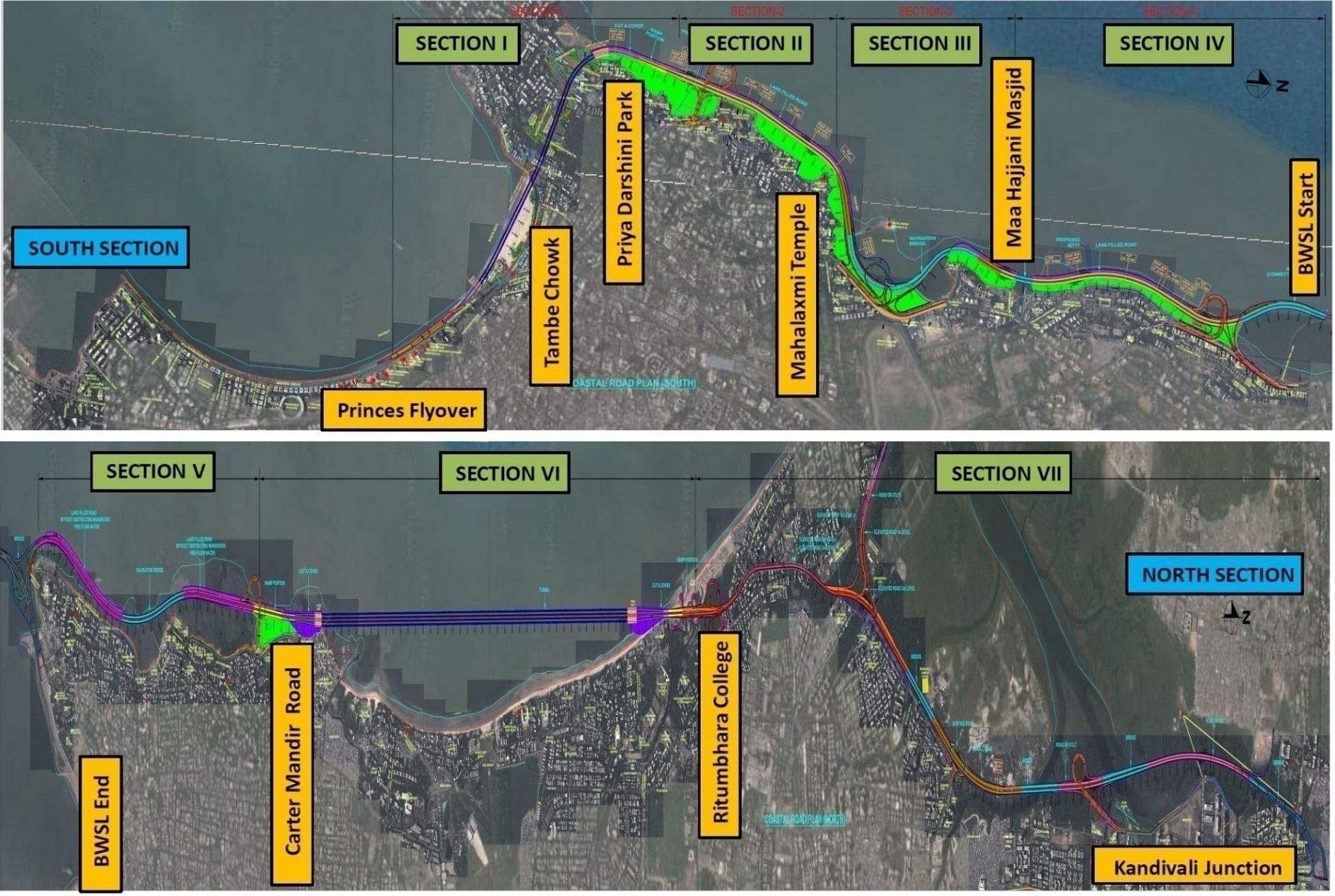The project is set to dramatically transform the coastline in South Mumbai, which has a long history of reclamation. Once complete, the road will extend the coast up to 100 metres inside the sea.
The completion of Phase 2 of Mumbai’s Coastal Road Project, which includes the stretch between Baroda Palace near Haji Ali and the Worli end of the Bandra-Worli Sea Link, will require an additional Rs 922.92 crore and seven months.
Mumbai’s Coastal Road Project is to be constructed in two phases. Phase 1 of the Mumbai coastal road project is a 10.58-kilometre stretch from Marine Drive to Worli. The second phase involves connecting Bandra Sea Link to Kandivali Junction.
The revised estimates submitted by the contractor, Hindustan Construction Company (HCC), in partnership with Hyundai Development Corporation (HDC), have been approved by Brihanmumbai Municipal Corporation (BMC) Commissioner Iqbal Chahal.
Modifications to the plan were necessary due to an agreement reached last year between the BMC and the fishing community in Worli.
Originally, the coastal road was intended to be connected to the sea link through an elevated arterial bridge supported by monopiles (pillars). However, the fishing community expressed concerns about the insufficient gap between the pillars for boats to pass through.
The fishing community requested a 200-metre gap between the pillars, while the BMC recommended a 60-metre gap. Following protests by the fishermen, Maharashtra Chief Minister Eknath Shinde intervened and instructed the authorities to increase the gap to 120 metres.
In response to the revised gap requirement, HCC and HDC conducted a study and proposed the removal of ‘Pillar 8’, as well as maintaining a 120-metre gap between Pillar 7 and Pillar 9.
The contractors also suggested the use of a ‘bow string’ girder bridge, which would be supported by high-tension chords instead of traditional pillar-based supports, reports Free press journal.
According to the contractors, the proposed changes to the plan would result in an increase in costs amounting to Rs 750 crore, plus an additional 18 per cent GST and other charges. Furthermore, the implementation of these changes would require an additional seven months.
Currently, 64 per cent of Phase 2 of the project has been completed. Originally scheduled for completion in October 2023, the project is now expected to be finished by May 2024.
Mumbai Coastal Road Project
The first phase of the coastal road is being built by the BMC at an estimated cost of Rs 12,500 crore to speed up the suburban commute to and from South Mumbai.
Once completed, the ambitious coastal road project (phase 1) will add an 8.5 km long and 20-metre wide sea promenade to the city between Priyadarshini Park at Napean Sea Road and the Worli side of the Bandra Worli Sea Link.
BMC has envisaged a Mumbai Coastal Road Project –South (MCRP) along the Western Seafront of the city to decongest the existing roads.
In the first phase, this ambitious project intends to connect from Shamaldas Gandhi Marg (Princess Street Flyover, Marine Drive) in the South to Worli End of Bandra Worli Sea Link comprising a combination of coastal roads based on reclamation, tunnels, bridges/flyovers, elevated roads, interchanges, sea wall/break wall etc.


India’s largest 12.19-metre diameter tunnel is being constructed 20 metres below the shore of the Arabian Sea and 70 metres below the Malabar Hill has three lanes for transportation for south and northbound traffic.
One of the lanes is proposed to be reserved for emergency transport. The Tunnel Boring Machine (TBM) which is being used for building this tunnel has been named ‘Mavala’.
The objective of this project is to provide an alternate North-South Trunk route for the people of Mumbai which provides improved mobility to relieve the traffic congestion in Mumbai, enhances the environment and leads to the sustainable development of much-needed recreational public open spaces/greenery.
The coastal project is set to dramatically transform the coastline in South Mumbai, which has a long history of reclamation. Once complete, the road will extend the coast up to 100 metre inside the sea.


